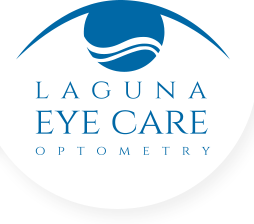Scleral Contact Lenses
-

Da Vinci’s design 1508 -

Modern Scleral Lenses
Scleral lens designs can be a game- changer for many patients with complex vision problems. They were first proposed in 1508 by Leonardo da Vinci to neutralize the optical power of the cornea, by enclosing a liquid reservoir over its front surface. They were not widely used due to fitting challenges. With the advent of highly oxygen permeable polymer materials and computerized lathe technology, these specialty contact lenses are back.
Because of their large size, scleral lenses are typically extremely comfortable, and can provide better vision than many surgeries, standard contact lenses and eyeglasses. They can postpone or eliminate the need for corneal surgery. Their benefits over other options can be divided into two main areas:
Vision Restoration of damaged corneas from a variety of abnormalities:
- Keratoconus
- Pellucid marginal degeneration
- Post – Radial Keratotomy (RK surgery)
- Post – LASIK corneal ectasia
- Post – Penetrating or Lamellar keratoplasty (corneal transplant surgery)
- Corneal Scarring – from ocular trauma, corneal ulcers and infections such as herpes simplex keratitis
- Salzmann Nodular degeneration and Terrien’s Marginal degeneration
- Other corneal dystrophies
Corneal protection against extremely dry eyes – by creating a comfortable “liquid bandage” over the front surface of the eye. These ocular surface diseases include:
- Keratoconjunctivitis sicca (KCS)
- Sjogren’s syndrome
- Ocular graft-versus disease
- Stevens-Johnson syndrome
- Meibomian Gland disease (MGD) and evaporative dry eyes
- Neurotrophic corneas
- Exposure keratitis from lagophthalmos, exophthalmos and Bell’s Palsy
- Eyelid disorders such as entropian, ectropian, triachisis, symblepharon and coloboma
- Lacrimal Gland disease
- Ocular cicatricial pemphigoid
Scleral contact lenses are more complex than standard lenses. For example, the back surface of the lens requires five or more separate custom curves to properly contour the eye. Special design features, such as the use of reverse geometry, toric, bitoric, quadrant-specific, notched edges and multifocals are sometimes necessary. This requires specific expertise, training and experience on the part of the doctor. Since the fitting process can take more time than standard contact lenses, some patience on the part of the doctor and patient alike is necessary. However for most patients who qualify for scleral lens correction, the end results can be exceptionally rewarding.
